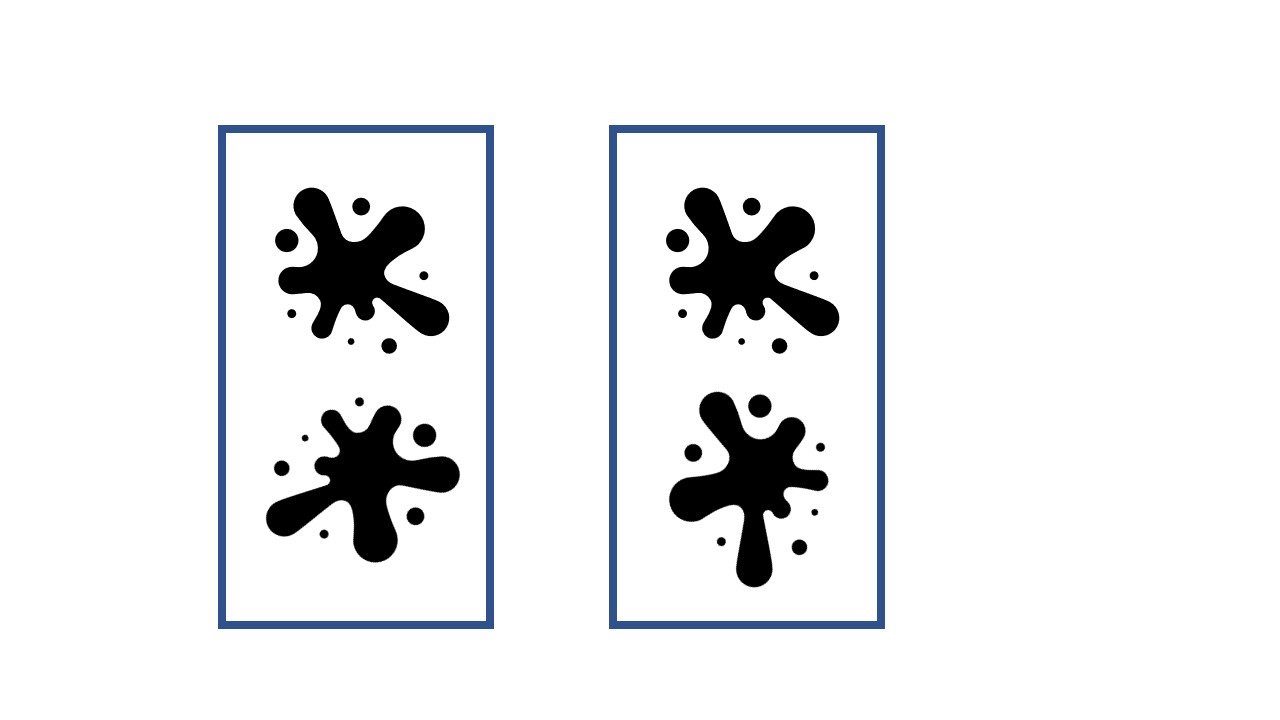Thomas International GIA Test (2025 Guide)
All products and services featured are independently selected by WikiJob. When you register or purchase through links on this page, we may earn a commission.
- What Is On The GIA Test?
- What Exactly Is Being Tested in the GIA?
- What to Expect From the Thomas International GIA Assessment in 2025
empty
empty
empty
empty
empty
- How Is the Thomas GIA Test Scored?
- How to Practice and Pass Your Thomas GIA Test: Step by Step
- What Employers Use the Thomas GIA Test?
- Frequently Asked Questions
- Final Thoughts
The Thomas International General Intelligence Assessment (GIA Test) is an assessment of what is described as ‘fluid intelligence’. There are broadly two types of intelligence: fluid and crystallised.
-
Crystallised intelligence means learned knowledge and experience; that is facts, figures, and other retained information and understanding from education, life and everyday knowledge.
-
Fluid intelligence is the measure of your ability to process new information and how you use it to solve problems and identify patterns.
The GIA test assesses your fluid intelligence, mental capacity and problem-solving skills.
If you're preparing to take the GIA test, here are some valuable GIA test tips to help you perform your best.
What Is On The GIA Test?
The GIA assessment was originally developed to look at the intellect of Armed Forces recruits, and how easily they might be trained, as part of the recruitment process known as the British Army Recruitment Battery (BARB).
It was further developed into a psychometric test for Thomas International – used as a paper test since 1993 and in online testing since 2006.
Using the GIA, both employers and recruiters can make accurate predictions about your potential; whether you are applying within the same company (for a promotion or a move into a different department) or for a new opportunity.
It is also a great way for your employer to identify areas for development in a personal development programme, or to identify high-flyers and make sure that they are sufficiently challenged.
What Exactly Is Being Tested in the GIA?
The GIA (General Intelligence Assessment) is a cognitive ability test designed to measure an individual's general intelligence or overall cognitive aptitude.
It assesses various cognitive abilities that are believed to contribute to intellectual performance across different domains. The specific areas being tested in the GIA can include:
The GIA Test aims to provide an overall assessment of an individual's cognitive abilities, which are considered important for learning, problem-solving, decision-making and overall intellectual functioning.
It is important to note that the specific cognitive abilities assessed may vary depending on the gia testing publisher and the specific version of the GIA being used.
What to Expect From the Thomas International GIA Assessment in 2025
The GIA is split into five categories, each measuring a different cognitive skill.
The five categories are:
- Reasoning
- Perceptual speed
- Number speed and accuracy
- Word meaning
- Spatial visualization
As the GIA assessment is entirely online, the test itself is very quick – only 20 minutes – with an additional 20 minutes or so of examples and instructions. You are not likely, or expected, to answer every question in the test.
Knowing what to expect from each section will allow you to perform at your best in the general intelligence assessment, and practice questions will make you more confident about answering quickly. Try out some accurate, tailored GIA practice questions here.
Some more information about each section can be found below.
1. Reasoning
The reasoning section in the Thomas international GIA tests your ability to retain information in your short-term memory and then use this knowledge to answer a question.
This part of the GIA test involves a sentence that gives some information. It is then followed on the next page with a question and several possible answers. The information needs to be held in your memory, as the sentence will not be on the same page as the possible answers.
Tip: Make sure you don’t spend too long memorising the question word for word – simplify it if you can. This will save you time and help you be more accurate.
Example Question from Thomas GIA Test
Practice Thomas GIA Test with TestHQ.com
1. Laura is smaller than Julia
2. Mark likes apples more than crisps
3. Paris is closer to London than New York
Question 1: Who is smaller?
a) Laura
b) Julia
Question 2: Which does Mark like better?
a) Crisps
b) Apples
Question 3: Which is closer to London?
a) Paris
b) New York
Remember, when this section of the test comes up, the sentence will be on a different page, so you must memorise the information to get the right answer.
Take a Thomas GIA Practice Test
2. Perceptual Speed
In this section, the GIA Test is looking at your ability to find errors and inaccuracies in the given information. Spotting errors requires you to ignore any irrelevant information and quickly recognise similarities, differences and patterns.
Letters will be shown in pairs, using both upper-case and lower-case. To answer the question correctly, you must identify the number of matching pairs in the group.
In addition, taking tests with Thomas GIA test examples can help you to prepare, such as the example question below:
Tip: Don’t be afraid to count in your head or use your fingers. Time is of the essence and if you are not methodical in the way you look at the pairs, you will fall behind.
Example Question
a)
| a A | b D | s S | w W |
b)
| v W | t L | m M | d D |
c)
| m M | h H | g G | v V |
Determine how many times the letters above appear in pairs.
This can be trickier than it looks, especially when you know the test is timed. Be methodical in the way you look at the groupings, count as you go, and check twice to be sure. Look out for letters that look similar on first glance, such as ‘b’ and ‘D’ in this example.
3. Number Speed and Accuracy
This is a maths-based section in the GIA Thomas test, but you do not need much in the way of mathematical ability to answer it. During this section, you are being assessed on your ability to work with quantitative data comfortably.
This part of the GIA will present you with three numbers, and you are required to find out which one is furthest from the middle number.
Tip: The answer is provided; you just need to count. Don’t try and complicate things looking for the median.
Example Questions
For each of the three number sequences below, identify which number is furthest away from the middle number.
3, 17, 42
10, 300, 560
67, 58, 22
4. Word Meaning
In this section of the Thomas GIA assessment, you are not only being tested on your knowledge and vocabulary but also your comprehension of words.
You will be presented with three words and you need to identify the ‘odd one out’.
Tip: The words that are connected might be synonyms or antonyms, or they could have similar meanings or be part of the same thing but still have a differentiating factor.
Thomas GIA Test Sample Questions
- Choose the word that doesn’t relate to the others:
Purple
Orange
Car
If you need to prepare for a number of different employment tests and want to outsmart the competition, choose a Premium Membership from TestHQ.com.
You will get access to three PrepPacks of your choice, from a database that covers all the major test providers and employers and tailored profession packs.
- Choose the word that doesn’t relate to the others:
Circle
Oval
Square
- Choose the word that doesn’t relate to the others:
Shoulder
Knee
Wrist
5. Spatial Visualisation
This part of the GIA Test is assessing your ability to use mental images to visualise an outcome.
You will be presented with two pairs of images in individual boxes. You need to answer whether the images are the same in either, both or none of the boxes.
TOP TIP: A mirror image is not seen as the same – but a rotated image is. Visualise the shapes moving in the box to see if they will fit exactly on top of each other.
Example Question
How many pairs are the same?

a) 1
b) 2
c) none
How Is the Thomas GIA Test Scored?
The GIA Test scores are based on not only accuracy but also speed. Spending too long answering a question, even if you get it correct, can bring down your overall score – as can rushing through and answering questions wrong.
Your GIA Test score will be generated at the end, creating a report which your employer will receive.
The report shows your actual score as a percentile, as well as where you score in relation to a ‘norm’ group – a large swathe of previous test-takers. You will be able to see where your score lies in comparison to the general population and where your fluid intelligence is stronger (and weaker) than theirs.
This information is further distilled into bullet points that indicate where your individual strengths and weaknesses lie.
For example, if you score low in comparison to the ‘norm’ in perceptual speed, the GIA Thomas practice test suggests that you might struggle to spot inaccuracies. If you score highly in word meaning, you are likely to have a wide vocabulary and be able to express yourself well.
How to Practice and Pass Your Thomas GIA Test: Step by Step
Doing well on the Thomas GIA assessment practice test will improve your chances of getting a promotion or a new role, as well as identifying your potential to be a high-flyer or an exceptional candidate.
Here are our top tips for success on the Thomas GIA test:
Step 1. Practice
To know each section inside out, you need to practice the GIA aptitude test.
This will make you more confident when answering the questions, as well as honing your ability to spot errors, make connections and visualise answers.
You can get started with these practice questions from TestHQ.com.
Step 2. Approach It Logically
Don’t panic and answer too quickly; although this Thomas GIA test is scored on accuracy.
Taking that extra couple of seconds to absorb and retain the questions and possible answers could be the difference between a right and a wrong answer.
Step 3. Find Your Rhythm
You have limited time to answer as many questions as you can, so finding a rhythm will help you. This will come from your practice.
Applying the tip above in conjunction with finding your flow will make the process simpler and easier in all sections, and will avoid you spending too long on any particular question.
Step 4. Don’t Be Afraid to Count
Counting pairs in your head or using your hands or sounding out words in your head, or even tilting your head to see if your presented shapes match are all ways to work with the given information.
However, you cannot use paper or pens in the GIA Thomas test as it takes too long. You may need to engage in physical actions to help you retain information.
Step 5. Understand the Question
While this might seem obvious, it can be confusing. The questions in GIA testing themselves are not overly challenging (they require no previous knowledge or crystallised intelligence) but you should read the question carefully to ensure you are spotting the right thing.
You can achieve this through practice.
Don’t forget that in the perceptual speed section you will be required to memorise some information that you have to later answer a question on, so simplify it – and the other questions – where you can.
What Employers Use the Thomas GIA Test?
The GIA Test(General Intelligence Assessment) is used by a variety of employers across different industries.
The GIA Assessment is designed to assess an individual's cognitive abilities and general intelligence, which are important factors for job performance.
While the specific employers using the Thomas GIA may vary, here are some examples of industries and organizations that commonly employ cognitive assessment tests like the Thomas GIA:
- Recruitment and Selection Agencies.
- Corporate Organizations
- Government Agencies
- Consulting Firms
- Educational Institutions
- Finance and Banking Sector
- Technology Companies
The GIA test is the Thomas International General Intelligence Assessment. It is a psychometric assessment used by employers and recruiters.
The GIA test is used to assess fluid intelligence, which relates to a person’s ability to process new information and use the knowledge acquired to problem solve and identify trends or patterns.
GIA test results can be used to predict the potential of existing employees and prospective recruits. This test can also be useful within the personal development planning process.
Although originally used to assess the intellect of armed forces recruits, the modern Thomas GIA is used alongside other Thomas International assessments by many companies in various industries.
These include:
- Specsavers
- Siemens
- Yellow Pages
- Thames Valley Police
- Chestertons
- Brompton
- Merlin Entertainment
- Knight Frank
- JP Morgan
- Deloitte
- HSBC
- Southampton FC
- Biffa
The assessment is often found in the recruitment process for graduate schemes, but also used to assess experienced professionals for a role.
The Thomas GIA might also be used for professional development for staff already in a role to assess them for promotions or for training opportunities.
The Thomas GIA is split into five categories – reasoning, perceptual speed, number speed and accuracy, word meaning, and spatial awareness.
There are usually between 130 and 160 on the assessment, and you will have a 20-minute time limit.
It is not expected that you will answer every question, but you are marked on both your speed and accuracy so it is a clever idea to answer as many questions correctly as you can – as fast as you can.
The Thomas GIA is designed to be challenging so that it can give an accurate representation of the general intelligence of a candidate.
One of the most challenging aspects of the test is that it is a test – taken under exam conditions with a tight time limit and an unfamiliar structure.
With up to 160 questions per assessment and only 20 minutes to complete, it is not expected that you will complete the test and answer every question, but you are being evaluated on your speed as well as your accuracy, so the challenge is to answer as many questions as you can, quickly and correctly.
As this is an assessment of the way you deal with unfamiliar information and use it to answer questions, there is no previous knowledge needed to do well, but practicing answering the distinct types of questions under time pressure will help you perform at your best throughout the test.
Upon completion of the test, your results will be sent to your employer or the recruiting organization.
This report will provide your actual score as a percentile, but it will also show your performance when compared to others within a norm group. It will also highlight the areas where your fluid intelligence is stronger (or weaker).
Your GIA test score takes into account your accuracy and speed. For the best chance of passing the GIA test, you will need to dedicate significant time to test preparation. This will help you to familiarize yourself with the format of the questions, giving you a confidence boost when you come to take the test.
Answering a range of practice questions will help you to improve your time management skills, allowing you to give your best performance on the day of the test.
A PPA+ (Personal Profile Analysis) assessment is a personality test provided by Thomas International.
The PPA+ assessment provides insight into a test taker's fears, motivators, values and behavioural style.
The test takes around eight minutes to complete and offers a valuable analysis of a person’s behaviour at work.
You cannot fail a PPA test, but your PPA test results will have an impact on the likelihood of you being hired.
Recruiters use PPA test results to decide which applicants have the personality attributes needed to succeed within the job role. There are no right or wrong answers, but the answers that you give will help the recruiter to gauge your suitability for the job role.
To achieve the best score, it is important to study the job description for the role you are applying for.
Consider which of your personality attributes are aligned with the requirements of the job role.
When answering the test questions, you should do so in a way that highlights the personality traits that are needed for the job role you have applied for. To prepare for the test, you should complete as many different practice versions of the test as possible.
The PPA test is based on William Moulton Marston’s DISC theory. The DISC acronym stands for Dominance (Power), Influence (People), Steadiness (Pace) and Compliance (Policy).
Most people will demonstrate each of the DISC behaviour traits to varying degrees, depending on the situation they are faced with.
As a global, innovative assessment provider, Thomas International offers GIA certification to recruiters wishing to use its general intelligence assessments (GIA).
If you wish to become GIA certified, Thomas International can provide the relevant training and accreditation to enable you to use and interpret the GIA test.
Gaining GIA certified status means you will be able to facilitate psychometric tests, aptitude tests and other general intelligence assessments to assess candidates.
Gaining GIA certification shows that you have received relevant training from Thomas International to become an accredited user and interpreter for the GIA test. Having this certification means you will be able to facilitate psychometric tests, aptitude tests and other general intelligence assessments.
Becoming GIA accredited is likely to make you more attractive to companies looking to outsource their recruitment processes.
Gia is an acronym for General Intelligence Assessment (GIA), a popular type of intelligence test from Thomas International.
One of the best things you can do to get prepared for the Thomas GIA test is practice.
Not only will a practice test help you understand where you might need to revise or practice skills that you are less confident with, it will also help you feel more relaxed and familiar with the structure, layout, and the way you need to answer.
Finding different practice tests to complete will help you monitor your progress as you get closer to the day, so you know the practice and revision is paying off.
In the immediate lead up to the assessment, make sure to get a good night’s sleep, eat a decent, healthy meal, and stay hydrated – this will give your brain the best chance to work effectively and demonstrate your best cognitive functions.
The Thomas GIA is scored as a percentage based on the overall performance in each of the five sections. Your score will be based on your speed as well as the number of correct answers, so taking longer to answer in a particular section will bring your score down.
When the recruiter sees your score, it is presented in a report that shows your percentage in each section, your overall percentage, and how you have performed compared to other test takers. There are also comments for the recruitment team to suggest what your strengths and/or weaknesses are according to your test results.
The score you need to get the role you have applied for depends on the requirements of the job and what the recruitment team have set as a benchmark, so to ensure that you are taken to the next stage of the application process you need to score as high as you can on the Thomas GIA.
The time it takes to complete the Thomas GIA is usually between 30 to 45 minutes.
This time includes the necessary reading of instructions and completing the practice questions – which are there to help you make sure that you know what the questions are looking for in terms of answers, and what button clicks you need to make to answer and move on to the next question.
The actual time limit for answering questions is just 20 minutes, so it is a very quick assessment that covers a lot of ground.
Both the Thomas GIA and an IQ test measure general intelligence, but the Thomas GIA is more interested in your fluid intelligence and how that relates to future success in the role you have applied for.
The IQ test is often generalised, with more question types and a longer time limit, while the Thomas GIA is focused on specific types of questions that are known to be accurate predictors of future success according to occupational psychology.
You are much more likely to face the Thomas GIA than a basic IQ test as part of the recruitment process for a role as the results are tested and proven to be relevant for the job that you have applied for, giving the recruitment team accurate and unbiased data that they can use to make the best decisions on who to put forward for the next stage in the process.
The Thomas International GIA can be practiced online, and there are several different resources that you can use.
First, Thomas International have an Example Booklet, which is a PDF you can download containing test accurate practice questions.
You can find further resources in articles like this one from WikiJob which gives good examples of what to expect.
The Prep Packs and free tests at TestHQ.com are a full-spectrum resource that offer revision, tips and hints for success, as well as different tests to take so you are as prepared as possible.
There are other practice tests available online but be sure to check the structure against the practice test provided by Thomas International so you know the one you choose is accurate to the GIA that you will be taking as part of the application process.
There are many resources available online that can help you get familiar with the Thomas International General Intelligence Assessment (GIA).
One of the first places that you should look when you are preparing is the Thomas International website itself.
Although most of the information here is aimed at recruitment teams and HR departments, you can get a good idea of what the recruiters are looking for by seeing how they view it.
Articles like this WikiJob article can give you a good sense of what to expect as a candidate, with some example questions as well as tips to help you succeed.
For in-depth resources to get prepared for the Thomas GIA, you will find a wealth of information and practice tests at TestHQ.com.
There are free practice tests available, but the paid-for Prep Pack is the ultimate preparation tool when you are facing an assessment – everything from detailed information about the sections of the assessment to practice tests with answers, and revision guides, tips and tricks to ensure that you can perform at your best.
The Thomas GIA is scored as a percentage.
There are five sections in the assessment, and each section is scored based on speed as well as accuracy – so if you take a bit longer to answer, you will score lower on that section even if you get all the answers right.
The section scores are then added up to give an overall score as a percentage, alongside a percentile score that demonstrates how you have performed against other test takers.
For example, you might score 58% overall in the assessment, but this score might only put you in the 38th percentile, so you’ve only scored higher than 38% of the other test takers, which might not be enough to get put through to the next stage of the process.
The recruitment team will receive all this data, as well as comments about your strengths and weaknesses relevant to the aptitudes being assessed.
In general, you can consider a score below 35% to be low, an average score is somewhere between 35-65%, and the high scorers tend to get more than 86%.
To take the Thomas General Intelligence Assessment (GIA) practice test, there are generally no specific prerequisites or requirements.
The Thomas GIA practice test is designed to help individuals become familiar with the format and types of questions that may be asked in the actual Thomas GIA assessment.
However, it's important to note that the Thomas GIA practice test is intended for practice and preparation purposes only. It does not serve as an official assessment or substitute for the actual Thomas GIA assessment conducted by employers or organizations.
If you are specifically referring to a practice test provided by the Thomas International, the publisher of the Thomas GIA assessment, you may need to check if there are any specific instructions or requirements mentioned by the publisher. They may have their own guidelines or recommendations for taking the practice test.
In general, to take the Thomas GIA practice test, all you need is access to the practice test materials, such as online platforms, practice books or resources provided by Thomas International or authorized sources.
You can use these materials to practice and familiarize yourself with the test format, question types and improve your performance on the actual Thomas GIA assessment if you are required to take it as part of an employment process or other evaluation.
Final Thoughts
The Thomas International GIA Test is part of a suite of psychometric tests that can help employers and recruiters evaluate employees and predict their suitability for a role.
The GIA Test is a quick online test that evaluates your fluid intelligence. It isn’t an IQ test, but rather an applied intelligence test which can give insight on how quickly you learn and adapt.
To do well on this test, you need to be able to perform well under pressure and make quick and accurate decisions in more than one area. This is not necessarily a learned skill, but practice questions and assessments will improve your confidence and ensure that you can settle into a rhythm in answering questions.
Remember, this GIA assessment is not just about right answers – it is about speed too, so pondering too long over a single question could seriously impinge on your performance.






